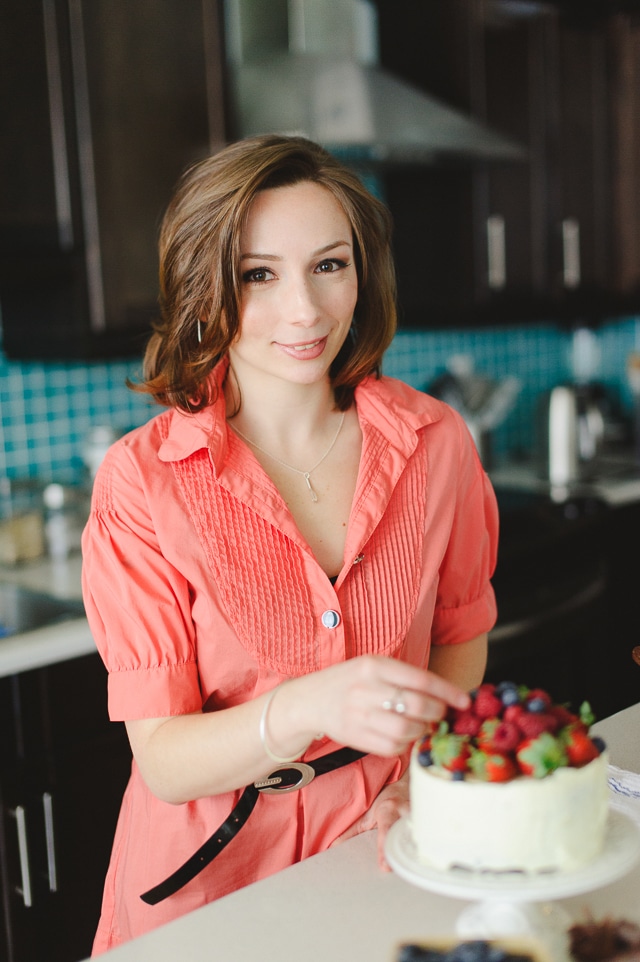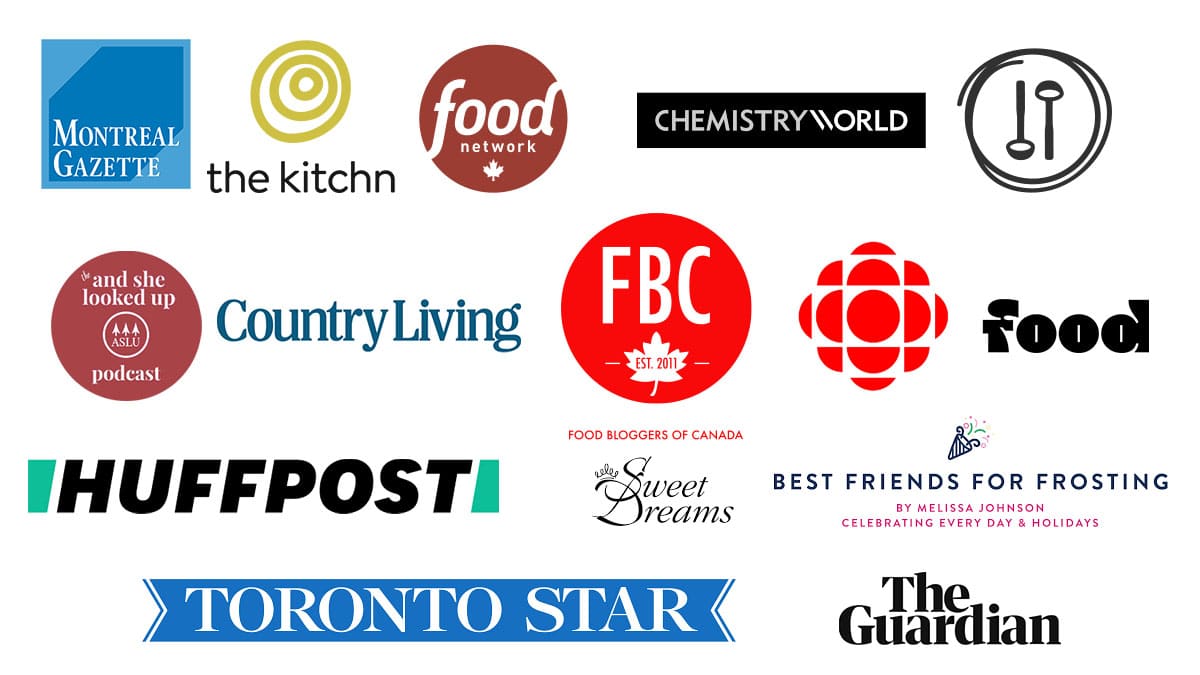I am a baking-obsessed recipe developer, living in Montreal, Quebec.
Education
I completed an undergraduate degree in Biochemistry from Concordia University in 2004 and defended my thesis in Organic Chemistry in 2010, graduating with a Ph.D. in Chemistry from McGill University.
After I completed my Ph.D., I enrolled at Le Cordon Bleu Ottawa to learn to be a better baker. Some call it inspiring, others call it crazy. I learned food styling and how to photograph food at workshops with Aran Goyoaga and Helene Dujardin.

Notable experience
I've contributed as a science expert, writing several articles about the science of baking and cooking for The Kitchn and Food Bloggers of Canada. I've also been interviewed for Chemistry World about the science of baking. I consult with food brands to help answer questions relating to science and food, using my education and experience to communicate food science to the public in English and in French. Here's my profile and an example of my work for La Famille du Lait.
I also work as a cookbook tester to give authors an objective second opinion on their recipes as written and also help troubleshoot when need be.

Why you can trust me
I am a scientist at heart with over 10 years of experience as a professional recipe developer, tester, and consultant. On this website, I want to share great recipes, but also the whys and the hows of baking. My goal is to transfer that knowledge to you so that you can better understand what we do when we bake, why recipes go wrong sometimes, and how to tackle baking problems to fix them.

I love experimenting in the kitchen, but always with a goal or a lesson in mind. I love to find concrete examples to illustrate a baking lesson, like the effect of cooking temperature on a batch of marmalade or the jam setting point, what too much baking soda will actually do to a cake and how the pH of muffin batter can make blueberries turn green, and a deep-dive on the different types of chocolate for baking, but also why sometimes banana bread recipes don't work or the science of why cookies spread out thin.
Printable Charts and Cookbooks
I created a bundle of baking charts to guide readers through baking ingredient conversions, baking pan equivalences and substitutions, oven temperature conversions, and more. I highly recommend you purchase the bundle if you haven't already because it will be invaluable to you as a baker. I wrote, developed and photographed a baking cookbook dedicated to baking with pumpkins called All About Pumpkin.
Frequently asked questions
Weighing your baking ingredients will increase your success rate, yield more reproducible results in the kitchen, and minimize dishes used. For these reasons, I recommend weighing your ingredients whenever possible.
For smaller quantities of ingredients (such as baking powder, baking soda, and salt), I still recommend using measuring spoons because most kitchen scales cannot weigh such small quantities properly (below 10 grams).
And for those who continue to use measuring cups, I have also included the ingredient conversions whenever possible.
If you'd like to start baking by weight, please consult my post all about baking conversions. You should also invest in a copy of my printable baking conversion charts to print and keep with your kitchen notebook to help you do the math.
Please do not replace fat with a fruit purée, unless you know what you are doing OR you are willing to treat this as an experiment where the results will vary. Please read my guide to substitutions in baking to find out why and how to make smart substitutions.
Sugar plays a very important role in baked goods. It has an impact on how things bake, how they brown, as well as the texture and even the shelf-life of baked goods. Please do not reduce the sugar in the recipes here unless you are an experienced baker or you are prepared for the fact that your results will be different than those outlined on this site. Please read about the role of sugar in baking to understand why this is a tricky change to make and also read about why cookies spread and why cookies are thick to get some visuals on the role of sugar in cookies.
Thank you! One of the easiest ways to support me is to either click the heart button in the bottom right corner of the page and/or subscribe to my newsletter. If that's not enough, consider buying my bundle of baking conversion charts. And if you would like to make a donation, you can buy me a pound of butter (or several): that money will be directly reinvested into maintaining and updating this website, and of course, to pay for butter to refine old and create new recipes.

I may have chosen a different path than the typical chemist, but I feel it’s the right one. I haven’t completely abandoned my background: I apply my knowledge and skills in science every day when I am testing/analyzing recipes. My OXO scale, my pink Thermapen and my KitchenAid stand mixer are probably my most prized kitchen tools, along with my kitchen notebook filled to the brim with scribbles and tidbits.

Today, I work in Montreal as a recipe developer, a cookbook tester, as well as a food stylist and a food photographer. Please visit my press page to find the online and print publications where I've contributed and shared my baking expertise, and be sure to check out my portfolio to see some of my work!
Let's Stay Connected on Social Media
If you'd like to connect with me on social media, here are a few options.
The Bake School features
The Bake School and Janice Lawandi have been featured in a number of publications, including:

